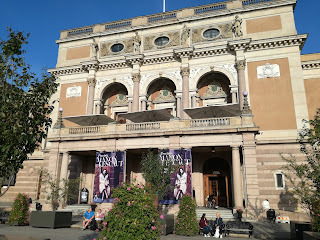Sweden and Finland in September
In September 2017 I spent a week in Stockholm and Helsinki (Yes, I know it's been a while since and only now I'm writing a post).
I didn't have any expectations except for the fact that you do have to be careful with your funds as those two countries can leave your pockets empty before you know it. However, it's worth every bit.
Stockholm struck me as a colourful city bathed in the sun, whose grandiose buildings look even more stunning that way. It's also special as it stretches across many islands, so you'll reach parts of town using a ferry/boat.
On the other hand, there is Helsinki, a modest Finnish capital, just less than an hour away by plane from Stockholm. It struck me as a mixture of influences from Scandinavian countries (Sweden) and its Russian neighbours. There is none of the grandeur from Stockholm, but of the two, Helsinki is my favourite.
Further are some of the photos I took during that trip that I hope will help you get an impression of the two cities.
Colourful buildings in Stockholm and the most popular ones on the main square - Stortorget.
Interior of a bar at Stortorget
One of the cool small shops in Stockholm centre
Stockholm stretches across numerous islands
Stockholm Theatre
Cobbled streets in Stockholm centre-Gamla Stan
Coffee can't go without Kannebullar (cinnamon roll)
Opera House
Stockholm is a city of parks and statues (Park in Skansen)
Having said that, each statue has an interesting story, and many of them are female.
Statue of famous Swedish actress, Margaret Krook in her favourite spot in front of the theatre. The statue is heated in the chest part all the time, to symbolise warmth.
Stockholm is also the city of Abba. Check their museum.
Did I mention seafood? Absolutely delicious there.
As well as Kannebullar and other sweets
-as well as the language
Helsinki is a seaport.
Helsinki Cathedral
Sibelius Monument
All pictures are copyright @meninaidris blogspot-connected.







































































